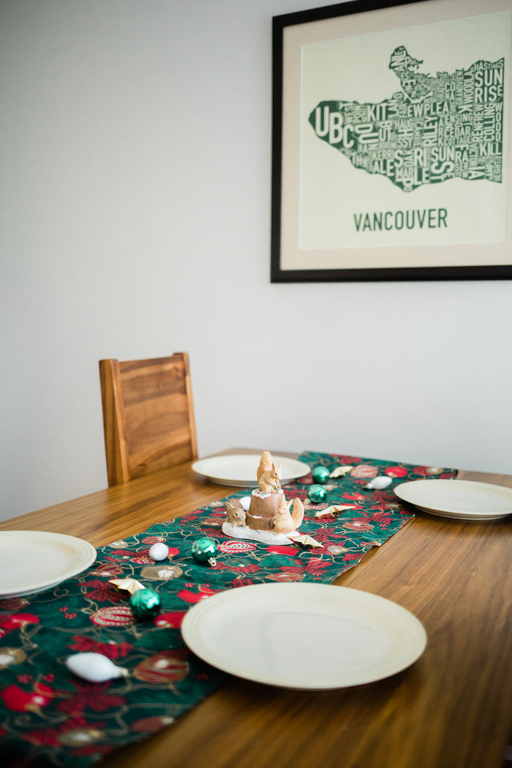With the holiday season in full swing, there’s a few things we should be mindful of as parents of babies and toddlers. Balancing the safety of a child alongside all the festive decorations, food, drink and socializing around the holidays can be tough.
Poisoning, choking and burn risks are particularly heightened during the holidays, especially during social gatherings. Remember that guests will likely not watch your child closely, or may assume someone else is (when in reality, potentially no one is).
We’ve seen a similar phenomenon during summertime with drowning: where adults easily let their guard down around water when other adults are present. This happens because we subconsciously (not intentionally) assume if there’s enough responsible adults around, we are probably okay to not pay full attention. Where this becomes a problem is when everyone subconsciously (again, not intentionally) lets their guard down and ultimately, no one is watching.
Though supervision is absolutely helpful in all aspects of safety, it’s not realistic to expect 100% supervision of a child for every moment they’re awake. For that reason, we should add in layers of protection. Here are my top holiday ‘layers of protection’ to keep our little ones safe, while still enjoying the magic of the holiday season.
Ask guests to put their bags and belongings behind a gated-off area
A number of poisonings occur during the holiday season when a curious baby or toddler slips out of sight for a moment to check out what’s in a guest’s bag.
Consider what could be in a guest’s bag that you wouldn’t want your little one to get into: hand sanitizer (this is becoming more and more common as the pandemic continues), medication, cosmetics, etc. Keep in mind that grandparents taking medication may not store their medication in child-resistant containers. Poisoning aside, choking risks are also very likely to be present in a guest’s bag, such as coins.
I suggest keeping bags (and coats, unless hung out of reach) behind a gated-off area, such as on the stairs. If your home is a single level and you don’t have stair gates, an alternative is to store bags or coats in another room, such as a bedroom or office, with the door closed to limit access.
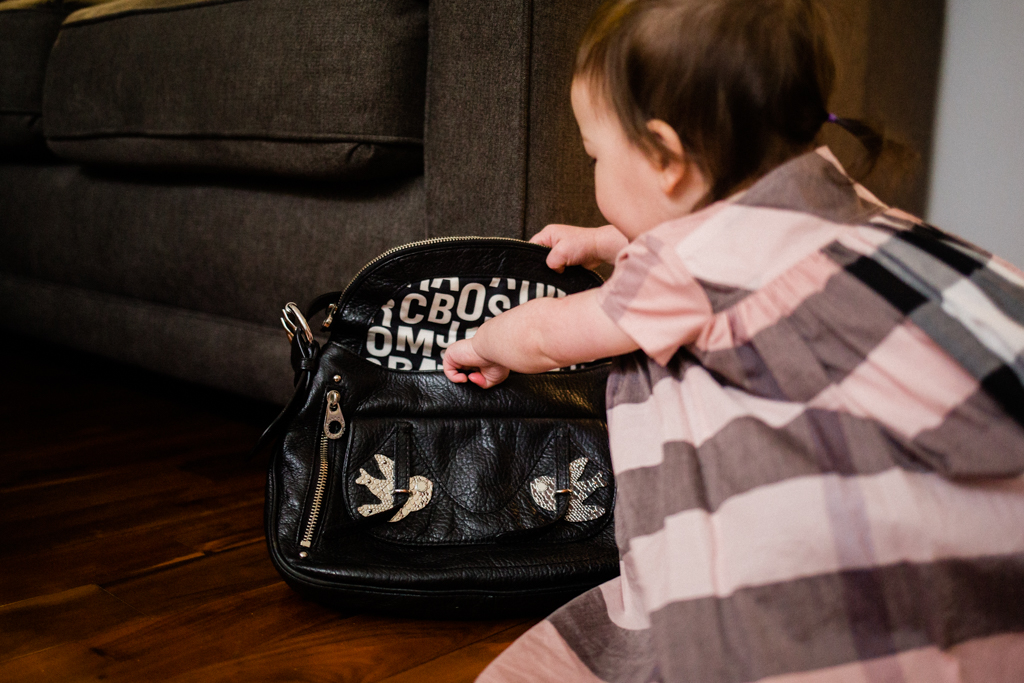
Have a plan for food and drink
A huge part of holiday entertaining is enjoying special food and drink. To go back to my earlier messaging around supervision, if a child is unattended for a moment, there is increased choking and poisoning risk if food or drink are within reach. When entertaining, we’ll often place snacks or appetizers on lower tables, like a coffee table, but this makes the food and drinks immediately accessible to a child. Before you place food or drink on a low table,
Consider: are bowls of nuts or candies within reach of my child? What about alcohol beverages? If they are and you need to leave the child unsupervised for a moment (you know – getting something out of the oven, grabbing a drink for a guest) it’s important to have a plan for your child: a playard they can hang out in until you’re back, a friendly lap to sit on where that person understands their job is to fully supervise the child, a gated play area or otherwise.
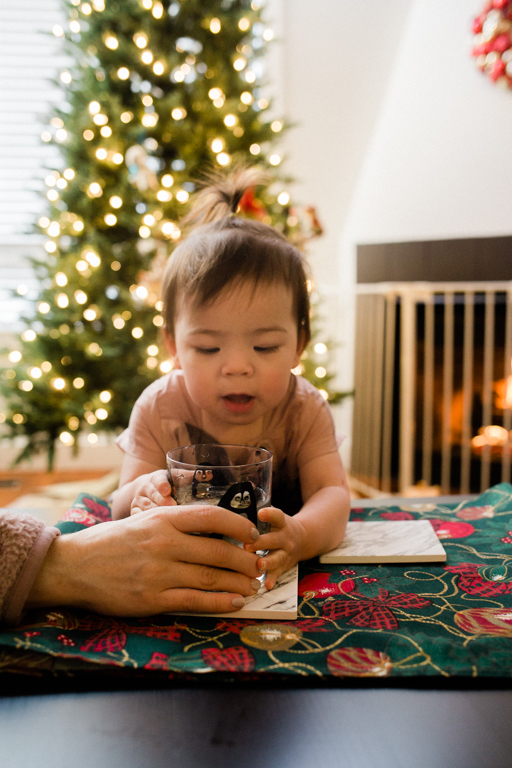
Christmas Tree Baby-Safe Ornaments
Of course, yes, you can skip the tree! Yes, you can skip putting ornaments on! But if you’re choosing to decorate a tree this year, here are some things to consider when it comes to Christmas Trees and safety:
If you’re worried the child will pull on the tree, consider fencing the tree off. This can be achieved either with baby gates – or – in some cases, parents have had success making a round “box wall” (think a bunch of cardboard boxes, stacked a few feet high, taped together in a circle). This can be wrapped in gift wrap and prevent access to the tree.
Strings of lights can be a hazard to young children, too. Mostly from a strangulation risk, but they can also be used to pull down the tree. If you have a tree that’s not artificial and “pre-lit”, consider wrapping the lights around the trunk of the tree, rather than laying them across the branches.
When it comes to ornaments, keep it simple. Choose shatterproof ornaments (or otherwise unbreakable) that are held up with tightly knotted ribbon, rather than sharp hooks. Avoid using any ornaments that have small parts, and save the sentimental ornaments for when they’re older to avoid the heartache of a broken keepsake.
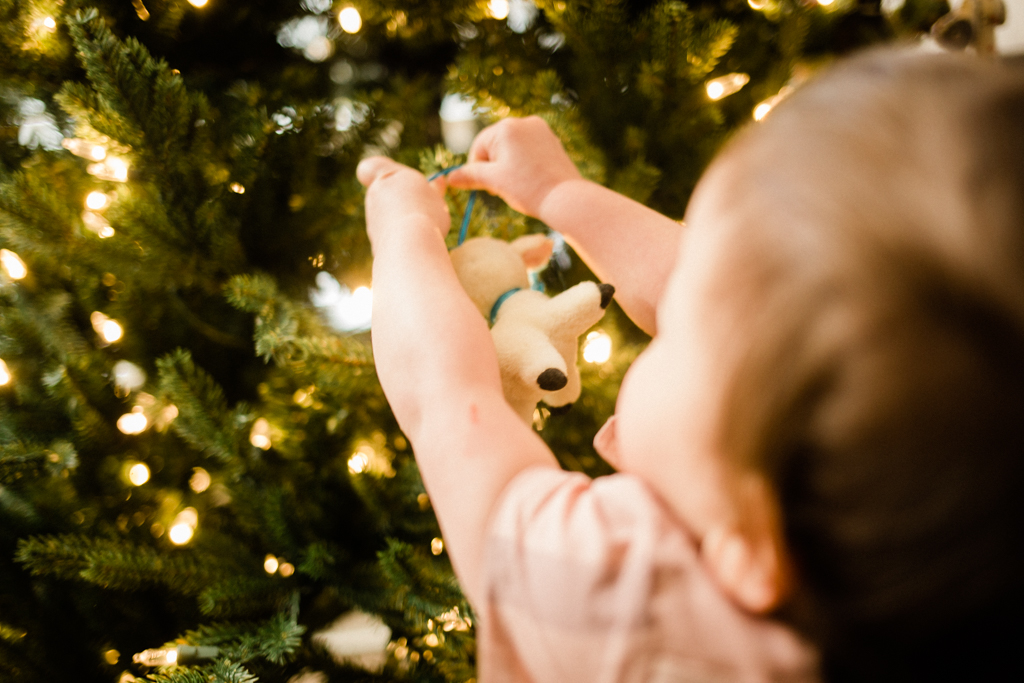
Stockings
This is something that I had to quickly adapt to when celebrating my oldest daughter’s first Christmas holiday: where do we put the stockings? My mom is very near Martha Stewart-level when it comes to her holiday decorating, so I figured we’d hang them above the fireplace, as that’s considered typical in many North American homes. However, I quickly realized weighted mounts/hooks on a mantle can be a bleeding and head injury risk to small children; as they’re known to pull on the stocking and have the mount fall onto them.
Instead, we place our stockings under the tree on the tree skirt, and keep them stockings empty until the kids are asleep the night before Christmas. On Christmas morning, these will be accessible to our kids as they’re already on the floor, and it avoids them pulling them down from a higher area.
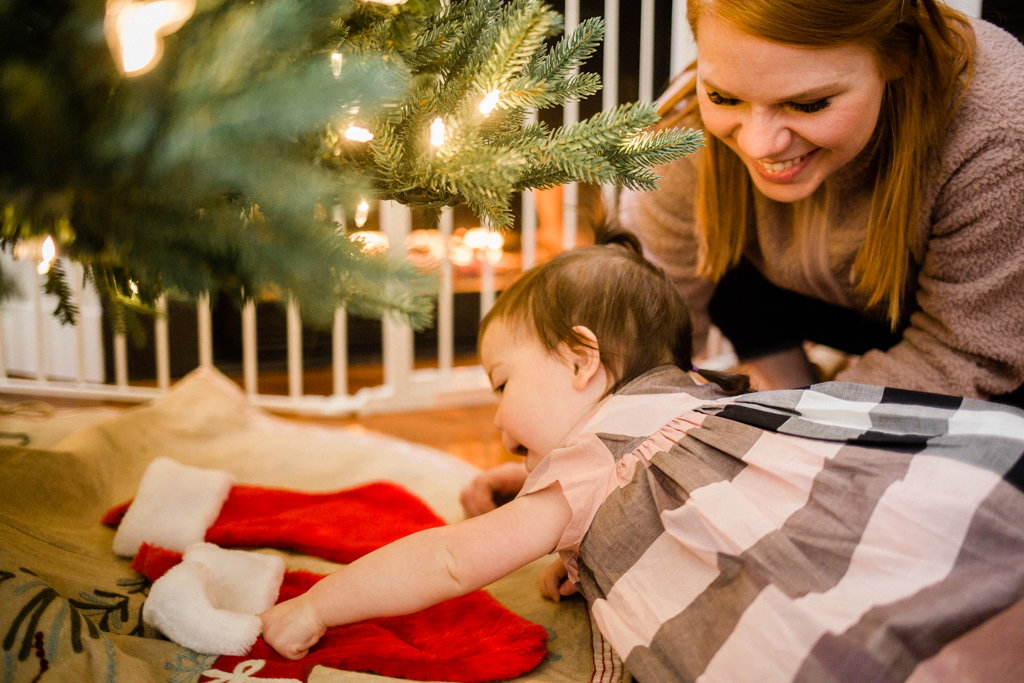
Age appropriate toys
I *know* this is a struggle for every parent at some point: a well intentioned friend or family member gifts your child a fantastic toy — but your child is too young to play with the toy safely.
When you receive a new toy for your baby or toddler, always read the labels on the packaging to make sure the toy is age-appropriate and non-toxic (for items that they may suddenly decide to ingest, such as PlayDoh 😅). Toys labelled “not for children under age 3” may contain choking hazards or materials that are toxic if ingested. Before using the toy, read the instructions so that you can show the child how to use the toy properly.
Okay, but: what if I received an inappropriate toy? Here’s how I handle it: I say thank you, and I put it away for later. There are some toys that got put away until my daughter was 5 (yes, 5!) because she received toys for 5-7 year olds even on her first birthday. In my opinion, it’s not worth the awkward exchange, but I do make a habit when asked what my kids want for gifts to say, “here’s what their into – just double check for me that the age recommendation is accurate before you purchase anything, lots of things may be a bit too ‘old’ for them!” There’s no harm in getting ahead of the problem by reminding friends and family ahead of time.
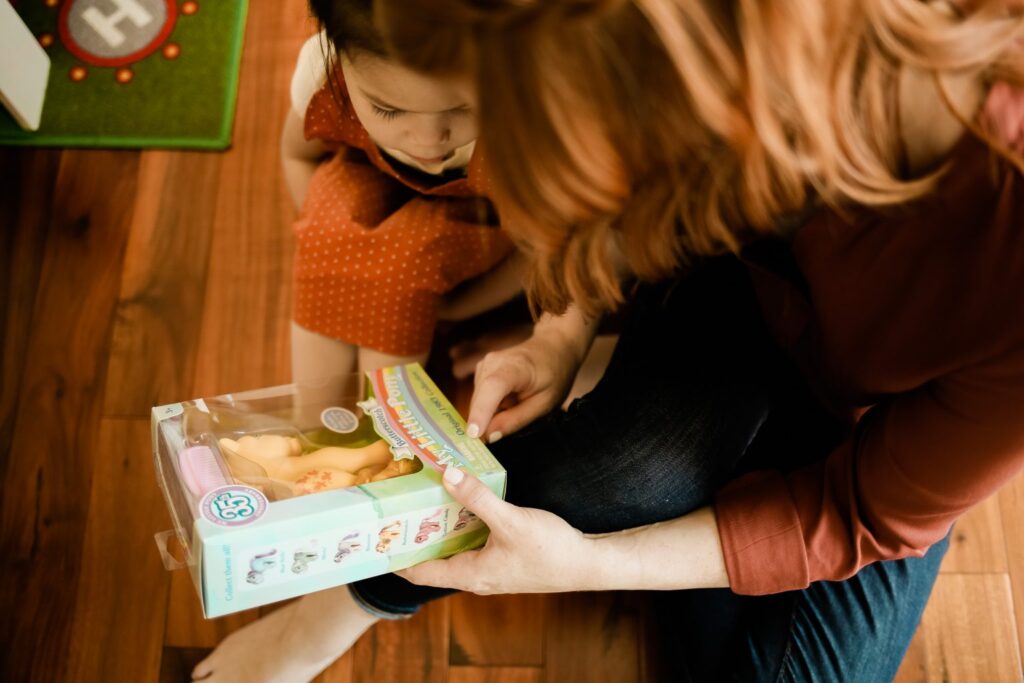
Buying them wheels? Get them a helmet, too.
Thinking of buying a bicycle, skateboard, or scooter for your toddler? Please buy a helmet to go with it.
All outdoor ride-on toys should be purchased with the proper safety equipment, like helmets and knee/elbow pads. Toddlers are natural boundary-pushers and likely don’t understand the repercussions of falling off a bike, scooter or skateboard without a helmet. It hurts all the same to fall off a bike without pedals as it would a bike with pedals.
When purchasing a helmet, please be sure to purchase one that:
- fits them properly
- is designed for the activity they’ll be using it for (biking, skateboarding, skiing, skating etc) – this will be very clear on the packaging
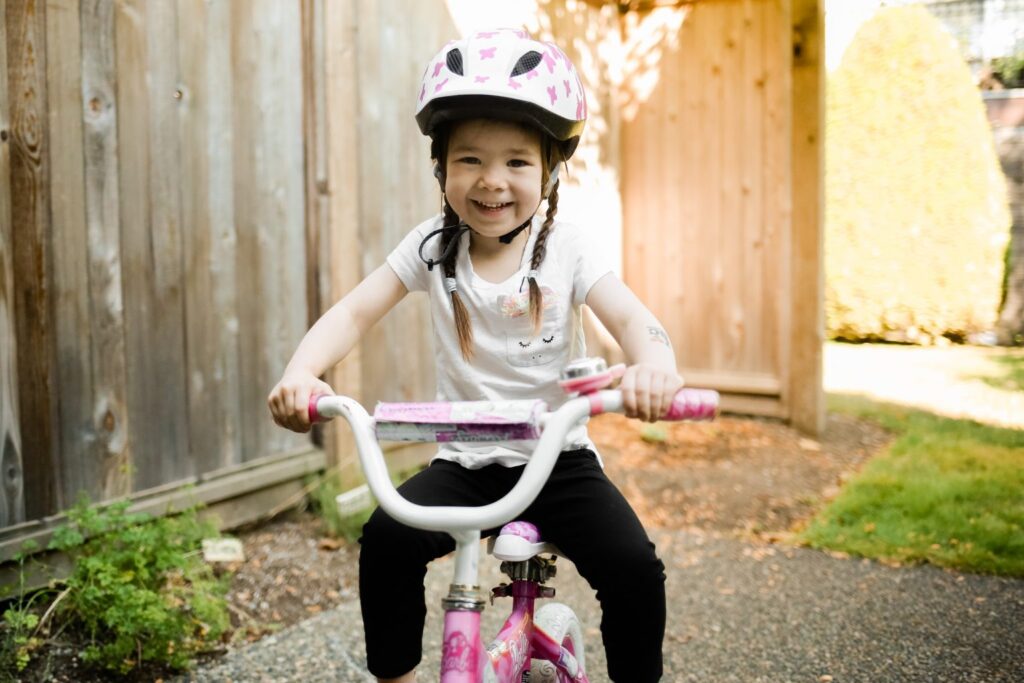
Poinsettias aren’t poisonous
Surprise! It’s true: they’re NOT poisonous! This is a very common myth, but that’s all it is: a myth. While poinsettias could be poisonous to pets, they are relatively harmless to humans. ⠀
In fact, you could enjoy a poinsettia salad if you really wanted to – and at worst you’d get a bit of a tummy ache. That being said, people with a latex allergy should steer clear of poinsettias. Poinsettias produce latex and coming into contact with the plant can trigger latex allergies.
Via Poison.org: “This festive plant is not deadly, but some stories just won’t go away. Over a hundred years ago, a child was found next to a wild poinsettia plant. He died and people blamed the plant. This hasn’t happened since. Researchers even tried to find out what the poisonous dose of poinsettia might be and they just couldn’t, even after reaching experimental doses of about 1.25 pounds (500-600 leaves). The plant does not have dangerous effects when eaten.”
So, thankfully, there’s one thing we can be a bit less stressed about during the upcoming holiday season.
Drive-thru Christmas Lights
Drive-thru events can absolutely be safe, if done right!
In order for a drive-thru event to be safe for your kids, the following things need to happen:- They must be in their car seat
- They must remain harnessed in their car seat the whole time
- The driver must be committed to focusing on the road
When does a drive-thru event become unsafe?
- Children riding in a vehicle outside of their car seat is not safe. Injuries can occur to unrestrained vehicle occupants, even at low speeds.
- It’s tempting to unbuckle a child – but please don’t. Even if your vehicle isn’t moving, others could.
- If it’s a lights display – don’t worry! They’ll see it out the side and back windows.
- Distracted driving is a leading cause of motor-vehicle collisions.
- If you can’t make the above happen – is bundling them up in a baby carrier (or a stroller) and walking an option? Do that instead! If not, skip it this year. There’s plenty of other activities that can be done safely.
Safe gift wrap
If you’ve ever watched a baby or toddler open a gift you know: they’re often way more interested in the gift wrap and/or box than they are the gift 😂
It’s something we should consider before we start piling up presents under the tree.
I used to be an ‘extra’ holiday gift wrapper: lots of bows, tags, twigs/greenery, jingle bells — and while I get there again one day, it’s on pause while my children are little.
Ribbon, bells, greenery, gift tags, candy canes – they can all be choking hazards when an unattended baby or toddler gets access.
Cut yourself some slack this year, save yourself some time, and help the environment at the same time: keep it simple!
Simple paper wrapping (ideally recyclable!) or using a reusable fabric gift wrap are perfect options when you’ve got a curious mobile baby or toddler.
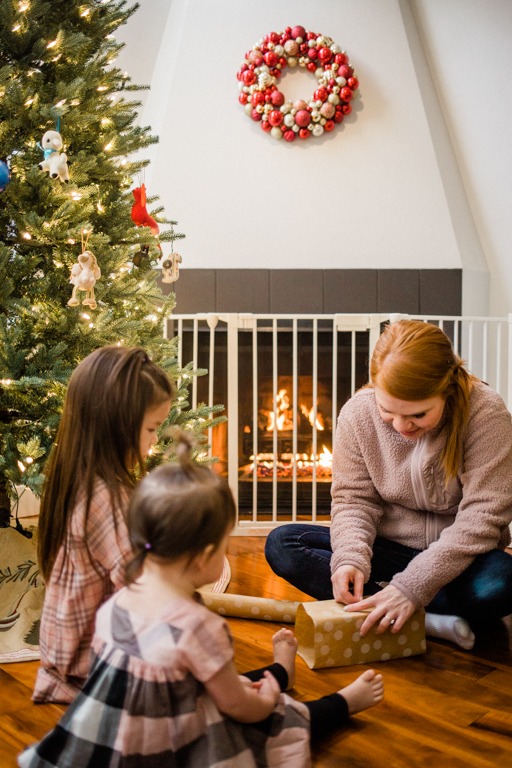
Sledding? Here’s what you need to know before you go.
For many families, sledding is a fun and easy way to get outside in the winter—all you need is snow, a hill, and a sled. But for too many children, the fun of sledding is ruined by injuries that could have been prevented.
With winter just days away, we need to think about sledding safety before heading out into the cold. Like many other winter activities, sledding creates some risk of injury.
Sliding down ice and snow on a plastic or wooden sled creates more energy than our bodies are designed to handle, so the chance for injury is high. Data from hospitals show that tens of thousands of children are injured while sledding every year, with many suffering head injuries and broken bones. Many of the more serious injuries happen when the child on the sled runs into something in the environment (tree, fence, light pole, another sledder, etc.).
Sledding near streets or highways also leads to increased risk of injuries. Fortunately, there are ways to reduce these dangers so that everyone can enjoy sledding and stay on the hill.
- Always wear a helmet. If you don’t have a snow sport helmet, opt for a bike helmet.
- Pull small children on a sled. Older children should use steerable sleds, and avoid tubes and disks.
- Always ride feet-first.
- Sled away from trees, fences, roadways and other dangerous obstacles.
- Children under 12 years should always be joined by a parent.
Battery-operated candles
Battery-operated tea lights are a great way to reduce to the risk of burns and fires when we’re using candles. The catch? They are battery powered, and typically with a button battery. If swallowed, button batteries can cause serious injury or death in as little as two hours.
How to make it safer when you have small children at home
- At a minimum: ensure anything operating with a button battery is completely out of reach of small children.
- Find battery-operated tea lights with compartments that can be secured with screws. Duct-taping over the battery compartment can add another barrier between a child and a battery.
- Consider: does the thing I’m trying to light actually need to be lit? Is it safer to just leave it be?
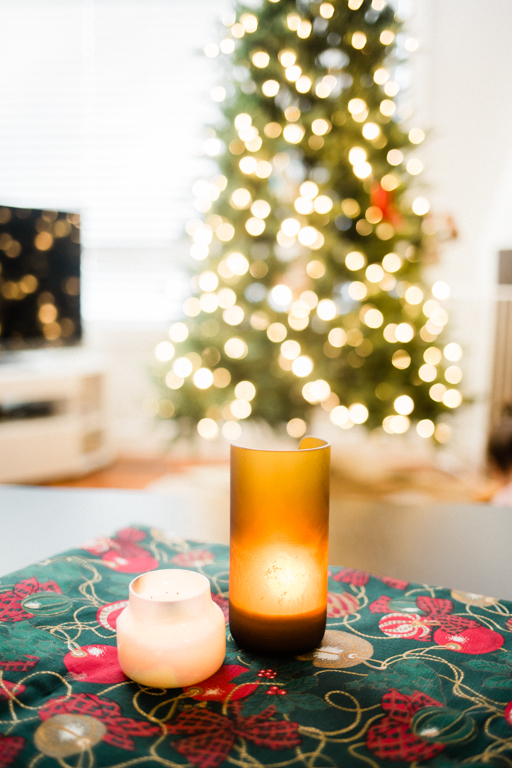
Tableware
Hands up if you love a beautifully decorated table at a family dinner
I would describe life growing up in my mom’s home similar to being raised by Martha Stewart (minus the whole insider trading scandal ). My mom has always had an eye for arranging a dinner table *just right* for special occasions. But now being a mom myself, I realize I just can’t be that “extra” when it comes to family dinners – at least, not yet, and not with my dining table.
You almost have to EXPECT that a child will try to pull on a table cloth, whether they’re trying to play with it, reach something, or just genuinely curious about what’s up on the table.
The two problems here:
- Toddlers are curious (which is great!) but,
- Toddlers are short and generally can’t see what’s up on the table
What we’re trying to avoid:
- Broken dishes, drinking glasses, and falling cutlery
- Hot food or liquids that can cause a burn
What you can do to prevent it:
- Best practice is to avoid table cloths altogether if you can, at least for the first few years of their life
- Use shatterproof or break-resistant dishware, such as bamboo or silcone where possible
